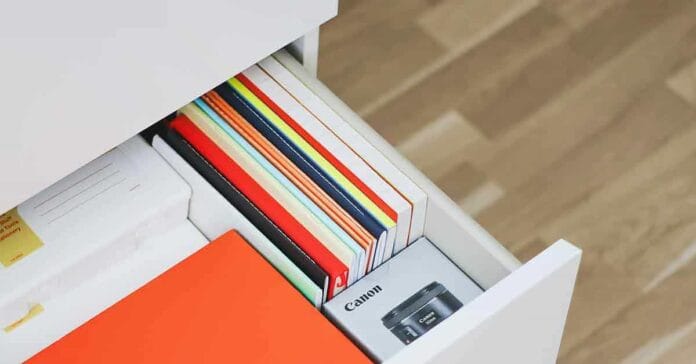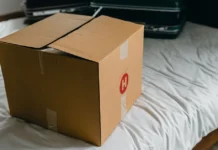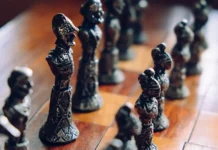Organizing small spaces can transform your home or office, making it more efficient and comfortable. Whether you’re downsizing, undergoing a renovation, or planning a relocation, effective organization is key. Decluttering is the first step to maximizing your space. Start by sorting through your belongings and deciding what to keep, donate, or discard. Utilize self-storage solutions for items you don’t need daily but want to keep, like seasonal decorations or documents.
Car storage options can also help free up garage space. Clever storage solutions like under-bed storage, wall-mounted shelves, and multipurpose furniture can make a big difference. This guide provides effective organization tips to help you make the most of your small spaces, creating a tidy, functional environment.
Organizing Small Spaces – An Overview
Whether you’re downsizing, renovating, or just trying to make your tiny home feel bigger, this guide is your quirky companion. Say goodbye to clutter and hello to clever solutions! Imagine transforming your space with savvy tips for decluttering, utilizing self-storage, and even freeing up your garage with car storage hacks.
We’ve got tricks for every nook and cranny, from under-bed storage to wall-mounted wonders. Ready to turn chaos into calm? Grab your favorite storage boxes and let’s dive into the fun of creating a perfectly organized, cozy haven. Get ready to embrace the magic of making small spaces work for you, one quirky tip at a time!
Here are a few items that you may need to consider for purging:
1. Unused Clothes – Organizing Small Spaces
Everyone has clothes stashed away for a special occasion, to lose ten pounds, or just in case the right shoes come along. Stop thinking that way! Most people wear the same ten to fourteen outfits repeatedly and that is fine! You are not required to change your clothes every time someone sees you. Accept that you will never wear that shirt that is a size too small, or those pants that hit above your ankle, or even that outfit you bought last season but has now gone out of style.
You will be able to really assess what you wear and do not wear once you start evaluating a few items. If you are not sure, try on these clothes. Examine their comfort and appearance. If they work for you, move them to the front of your closet so they remain in use.
When you think about what to purge when downsizing, clothes are one of them. We have a lot of clothes which we do not use, target them.
2. Books and Magazines that are Read
Getting rid of book clutter can be difficult. Fortunately, there are several approaches we can take to solve the problem, and we know all of them, and you will soon as well! Finding the best way to declutter books is a process that will take time and effort, but it will be well worth it once you have completed it.
There are numerous tips for decluttering books available online, but we compiled a list of the most important ones:
- Make the decision to let go.
Starting the process of decluttering your books will be an emotional journey. We get attached to our possessions in general, but books have a special place in our hearts because we associate them with feelings and events that occurred while we were reading them. Books have deep roots in our lives, even if we do not realise it at first.
- Consider the books that you require.
Once you have made the decision, you should begin planning your decluttering and visualising the result. When decluttering books, there are a few questions to consider like - What are you purging? A single bookshelf, a night shelf, or your entire bookcase collection?
- Upload your book collection to the internet.
Living in the twenty-first century comes with the advantage of always having the ability to own things in digital format. If you believe that owning paper books puts too much strain on your day-to-day efforts to keep your home decluttered, purchasing your favourite titles in digital format is a great idea.
Purchasing an e-reader and e-books is less expensive than purchasing physical books and keeps your home completely clutter-free.
3. Toys that are Outgrown
Is your house cluttered with children’s toys? Do you find it difficult to walk around your house without stepping on a toy?
If your children have grown, it is time to donate or dispose of their old toys. If your children are still young but you are tired of tripping over toys, designate and organise a playroom area where your children can easily put away their toys each day. Just make sure to get rid of anything broken or duplicate first.
What can you do with toys that your children outgrow? Here are a few quick and straightforward tips to help you purge them:
- Create Three Bins: Toss, Keep, Donate/ Store
You will need three bins: trash, keep, and donate/ store. As you pick up a toy, consider whether it should be discarded, saved, or donated. This makes going through your child’s collection a breeze. You may want to store some sentimental items for your memory. Consider making use of a self-storage facility for all such items.
- Throw away Broken Toys
Toss broken toys and unwanted items without hesitation. Not only are they broken, but they can also be dangerous to children. Sharp edges have the potential to cut them, or pieces may break off and be swallowed. Even if it is your child’s favourite toy, it must be discarded.
- Set a Limit
Consider setting a limit for how many toys your child can have. This helps imbibe a minimalist philosophy in your child from an early age. You could also have bins for each type of toy. When that bin is full, your child must either get rid of some items before purchasing new ones.
- Involve your Children in the Process
Childhood collections frequently become out of control. Spend some time assisting your child in decluttering their toys. This will encourage your child to use more of his or her toys and appreciate what they have.
4. CDs & DVDs that are Outdated
Getting rid of CDs and DVDs may appear to be a minor step because they do not take up much space on their own, but when you have large collections, they take up far too much space! If you do not want to lose out on your favourite movies try to find copies of them online to save to your extra storage hard drive.
CDs and CD players can also be done away with, and we can switch to cloud playlists like Spotify to have access to music wherever you are! Do not hang onto CDs because they are outdated and will not be returning anytime soon!
5. Hobby Equipment that is not Indulged In
While there is nothing wrong with trying new things, there is also something to be said about sticking with something that does not come naturally to you. Allow at least a month for a new hobby. After a month, consider whether you enjoyed the process. Consider whether the hobby brought you joy. If not, feel free to experiment with something new. For the interim trial period, consider renting out hobby equipment otherwise your home will be filled with remnants of hobbies that did not last.
Are you overwhelmed by mountains of discarded hobby supplies? Here is how to make some room.
- Lay it all out in the Open
Gather all your old hobby supplies and place them in a specific location, preferably the floor or a large table. This includes all your books, art supplies, and other items. Seeing everything in one place puts the clutter into perspective.
- Focus on the Process, Not the Result
Your hobbies are, at the end of the day, self-care. You should enjoy the process of your hobbies rather than the result. If painting stresses you out, you are unlikely to pick up your brushes at the end of a long day. Of course, you have complete control over which hobbies you pursue.
- Give your Old Hobbies a Second Life
Put your supplies for hobbies you want to try again somewhere you will see them frequently. Make it simple to remember your hobbies and pick them up when you have a few minutes to spare.
6. Gadgets that were bought on a Whim
Gadgets such as iPods or DVD players and so on were once a hype and must-have among people. Now, hardly anyone owns them. With the increase of online streaming services and platforms, there is no need for separate devices from your smartphone or laptop. Make sure you first clear any of your personal data and then begin the purging process.
The same can be said for appliances in your kitchen and around the home. Look around your kitchen. What devices do you own? A mixer, a spare toaster, microwave, popcorn maker, coffeemaker, and so on. Evaluate which ones you use on a regular basis and purge the rest.
7. Furniture that is Broken – Organizing Small Spaces
First, you must understand what you have before deciding what to keep and what to discard. One method is to conduct a furniture inventory and make a list of each room in your home, including outdoor spaces such as the garage or shed. After taking inventory, go through your list and figure out if you can repurpose the broken furniture into smaller pieces. If you cannot, then decide to throw them away or donate them if there are places nearby willing to take them.
8. Miscellaneous Items for Organizing Small Spaces
Some items in your home do not necessarily belong in any one room. They are frequently discovered in a junk drawer or thrown anywhere in the room. These items can be difficult to get rid of because you do not know where to put them, for example, documents you have read and not filed. Take time and reflect on their importance.
The plastic boxes without the lids or just trivial things you have gathered here and there need to go! Getting rid of them will help you have a cleaner and create more space in your home but makes sure that you do not hold on to them anymore for a ‘Just in case’ day.
Do not be alarmed if you cannot decide whether to keep or toss something during your home purge. This could simply mean that you need to rework your home’s organisation systems and develop a comprehensive decluttering strategy. You will eventually make it happen if you do not give up.
Organizing Small Spaces – Conclusion
Organizing small spaces can significantly enhance your living environment. By decluttering and utilizing smart storage solutions like self-storage units and car storage options, you can create a more efficient and comfortable space. Remember, every inch counts in small areas. Use under-bed storage, wall-mounted shelves, and multipurpose furniture to maximize space.
Regularly review and sort your belongings to keep clutter at bay. With these simple tips, you can transform even the smallest space into a tidy, functional, and inviting haven. Embrace the challenge of small space living and enjoy the benefits of a well-organized home. Your efforts will lead to a more peaceful and enjoyable living experience.
FAQs on Organizing Small Spaces
A1: Use vertical space with shelves and wall-mounted storage. Opt for multi-functional furniture that includes built-in storage.
A2: Regularly sort through items and donate or discard what you don’t need. Use storage boxes to keep items organized and out of sight.
A3: Use light colors on walls and furniture to create an open feel. Mirrors can reflect light and make the space seem bigger.
A4: Under-bed storage boxes and over-the-door organizers are great. Consider a bed with built-in drawers for extra storage.
A5: Use cabinet organizers and shelf risers to maximize space. Store seldom-used appliances in high cabinets or a pantry.
A6: Install shelves above the toilet and use over-the-door hooks. Corner shelves and tiered organizers can also help utilize space.
A7: Use baskets and bins to store remote controls, magazines, and toys. Choose a coffee table with storage underneath.
A8: Use slim hangers and install a second rod for double hanging space. Add shelf dividers and shoe racks for better organization.
A9: Use a wall-mounted desk or a foldable table. Keep supplies organized with desk organizers and wall-mounted shelves.
A10: Store infrequently used items in labeled boxes or bins. Consider self-storage options if space at home is very limited.







